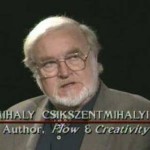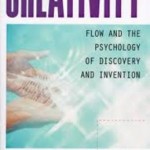Week.3 Scenario development & Flow Theory
A Scenario in SC-Design is the description, visual and/or textual, of a number of events as envisioned to be happening in a certain time frame between actors as a consequence of a new Technology implant.
A Sub Scenario is considered as the envisioning of event(s) to be happening between actors and one or two elements in Setting X .
The Main Scenario is considered as the envisioning of the events that take place between actors, when all Sub Scenarios are assembled into one integral design in Setting X.
1.Scenarios
Scenarios evoke reflection in the content of design work, helping developers coordinate design action and reflection.
Scenarios are at once concrete and flexible, helping developers manage the fluidy of design situations. Scenarios afford multiple views of an interaction, diverse kinds and amounts of detailing, helping developers manage the many consequences entailed by any given design move. Scenarios can also be abstracted and categorized, helping designers to recognize, capture, and reuse generalizations, and to address the challenge that technical knowledge often lags the needs of technical design. Finally, scenarios promote work-oriented communication among stakeholders, helping to make design activities more accessible to the great variety of expertise that can contribute to design, and addressing the
challenge that external constraints designers and clients often distract attention from the needs and concerns of the people who will use the technology.
Elements
Scenarios have characteristic elements. They include or presuppose a setting: Scenarios also include actors: human activities to include several to many actors. Each actor typically has goals or objectives. These are changes that the actor wishes to achieve in the circumstances of the setting. Every scenario involves at least one actor and at least one goal.
Actors
When more than one actor or goal is involved, they may be differentially prominent in the scenario. Often one goal is the defining goal of a scenario, why did this story happen? Similarly, one actor might be the principal actor, the answer to the question who is this story about? Scenarios have a plot; they include sequences of actions and events, things that actors do, things that happen to them, changes in the circumstances of the setting, and so forth.
Events
Particular actions and events can facilitate, obstruct, or be irrelevant to given goals. Representing the use of a system or application with a set of user interaction scenarios makes that use explicit, and in doing so orients design and analysis towards a broader view. It can help designers and analysts to focus attention on the assumptions about people and their tasks that are implicit in systems and applications. Scenario representations can be elaborated as prototypes, through the use of storyboard, video, and rapid prototyping tools. They are the minimal contexts for developing user-oriented design rationale: a given design decision can be evaluated and documented in terms of its specific consequences within
particular scenarios. Scenarios and the elements of scenario-based design rationale can be generalized and abstracted using theories of human activity, enabling the cumulation and development of knowledge attained in the course of design.
2. Flow Theory
(contemplating and envisioning scenarios in ‘Flow State’)
Flow also called “Optimal experience” is a concept developed by Mihaly Csikszentmihalyi.
“the holistic experience that people feel when they act with total involvement” .
References.
Csikszentmihayli & Nakamura, Mihaly & Jeanne ,2002, The Concept of Flow, The Handbook of Positive Psychology: Oxford University Press, pp. 89–92, ISBN 9780195135336
Csikszentmihalyi, M.,Optimal experience: psychological studies of flow in consciousness, Cambridge, UK: Cambridge University Press, pp. 15–35,
Csíkszentmihályi, Mihály ,1996, Creativity: Flow and the Psychology of Discovery and Invention, New York: Harper Perennial, ISBN 0-06-092820-4
Csikszentmihalyi, M & Rathunde, K ,1993. “The measurement of flow in everyday life: Towards a theory of emergent motivation”. In Jacobs, JE. Developmental perspectives on motivation. Nebraska symposium on motivation.
.





